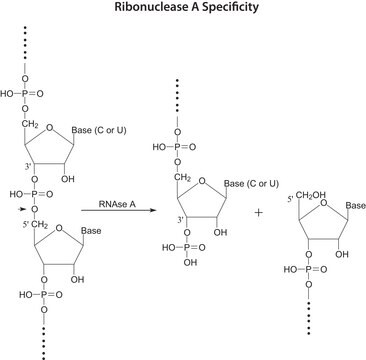S2889
Sodium acetate
anhydrous, for molecular biology, ≥99%
Synonym(s):
Acetic acid sodium salt
Sign Into View Organizational & Contract Pricing
All Photos(3)
About This Item
Linear Formula:
CH3COONa
CAS Number:
Molecular Weight:
82.03
Beilstein:
3595639
EC Number:
MDL number:
UNSPSC Code:
12161700
eCl@ss:
39021906
PubChem Substance ID:
NACRES:
NA.25
Recommended Products
grade
anhydrous
for molecular biology
Quality Level
Assay
≥99%
form
solid
autoignition temp.
1112 °F
pH
8.5-9.9 (25 °C, 246 g/L)
pKa
4.76 (acetic acid)
mp
>300 °C (dec.) (lit.)
solubility
H2O: 100 mg/mL
foreign activity
DNase, RNase, protease, none detected
SMILES string
[Na+].CC([O-])=O
InChI
1S/C2H4O2.Na/c1-2(3)4;/h1H3,(H,3,4);/q;+1/p-1
InChI key
VMHLLURERBWHNL-UHFFFAOYSA-M
Looking for similar products? Visit Product Comparison Guide
Related Categories
Application
- Evaluating acetate as a renoprotective agent following kidney ischemia in a porcine model.: This study explores the use of sodium acetate as a renoprotective agent to mitigate kidney damage following ischemia, highlighting its potential therapeutic applications in renal protection (Kominsky HD et al., 2024).
- Chitosan-PVA-PVP/nano-clay composite: a promising tool for controlled drug delivery.: Sodium acetate plays a crucial role in the synthesis of chitosan-based nanocomposites for controlled drug delivery systems, demonstrating its significance in pharmaceutical applications (Ali M et al., 2024).
- Direct Affinity Ligand Immobilization onto Bare Iron Oxide Nanoparticles Enables Efficient Magnetic Separation of Antibodies.: Sodium acetate is utilized in the immobilization process of affinity ligands onto nanoparticles for efficient magnetic separation, highlighting its role in biochemical separations and diagnostics (Zimmermann I et al., 2024).
Storage Class Code
11 - Combustible Solids
WGK
WGK 1
Flash Point(F)
Not applicable
Flash Point(C)
Not applicable
Personal Protective Equipment
dust mask type N95 (US), Eyeshields, Gloves
Choose from one of the most recent versions:
Already Own This Product?
Find documentation for the products that you have recently purchased in the Document Library.
Customers Also Viewed
Sulivan Jouanneau et al.
Environmental science & technology, 46(21), 11979-11987 (2012-09-20)
In this study, we compared two bacterial biosensors designed for the environmental monitoring of metals: Lumisens III and Lumisens IV. These two biosensors are based on the same bacterial sensors (inducible or constitutive bacterial strains) but with a different conservation
Amanda P De Souza et al.
Journal of experimental botany, 66(14), 4351-4365 (2015-04-25)
The production of bioenergy from grasses has been developing quickly during the last decade, with Miscanthus being among the most important choices for production of bioethanol. However, one of the key barriers to producing bioethanol is the lack of information
Carol L Ladner-Keay et al.
PloS one, 9(6), e98753-e98753 (2014-06-04)
The formation of β-sheet rich prion oligomers and fibrils from native prion protein (PrP) is thought to be a key step in the development of prion diseases. Many methods are available to convert recombinant prion protein into β-sheet rich fibrils
Mari Endo et al.
Journal of gastroenterology, 49(6), 1026-1039 (2013-07-13)
Daikenchuto (DKT), a gastrointestinal prokinetic Japanese herbal medicine, is prescribed for patients with postoperative ileus (POI) and adhesive bowel obstruction following abdominal surgery. Several mechanisms for the amelioration of POI by DKT have been suggested; however, it has remained unclear
Graham R Scott et al.
Molecular biology and evolution, 32(8), 1962-1976 (2015-04-09)
At high-altitude, small mammals are faced with the energetic challenge of sustaining thermogenesis and aerobic exercise in spite of the reduced O2 availability. Under conditions of hypoxic cold stress, metabolic demands of shivering thermogenesis and locomotion may require enhancements in
Our team of scientists has experience in all areas of research including Life Science, Material Science, Chemical Synthesis, Chromatography, Analytical and many others.
Contact Technical Service




